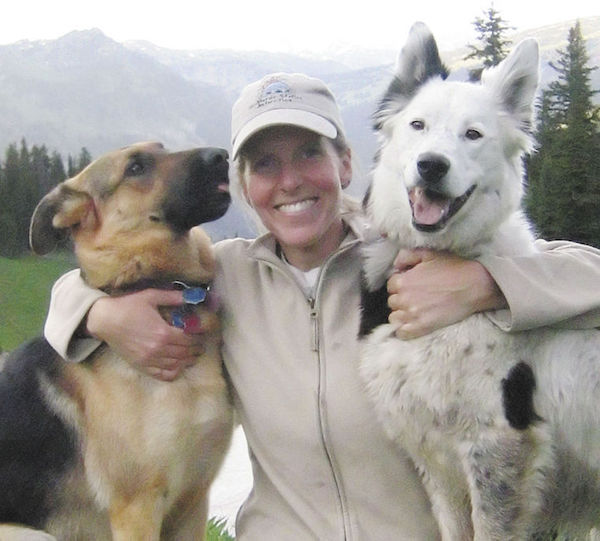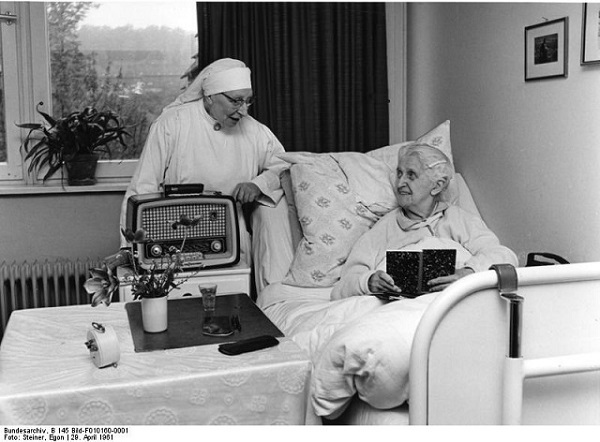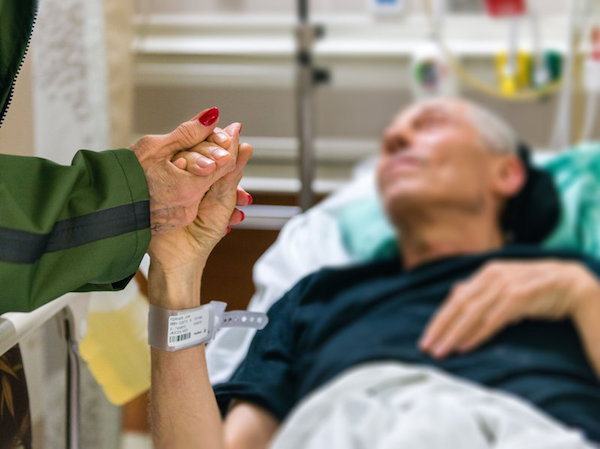
By
[T]he night my husband died, I slept beside his corpse in our bed. All night. This wasn’t exactly by choice: the funeral home did not retrieve bodies after 8 p.m., and there was no other bed available for me to sleep in, as all our children were home to help care for their father.
I tell this story whenever I discuss the realities of dying at home. Even as a physician assistant, I did not appreciate the challenges — or the immense rewards — of caring for my husband at home until his death.
According to a 2014 Harris/Decima survey, of those Canadians who express a preference for where they want to die, 75 per cent say they want to die at home, surrounded by loved ones. Interestingly, another Canadian study found that those loved ones aren’t quite as keen on the experience: half of the patients who said they wanted to die at home had family members who hoped the death would take place in an institution, like a palliative care unit. No matter: The majority (about 65 per cent) die in a hospital, which isn’t anybody’s first choice.
The palliative care and hospice community often use this data to advocate for more government funding of community supports, such as personal support workers, to help people die at home. And they’re right that home care and palliative care access is too uneven across Canada and in urgent need of more funding.
But what we don’t understand is how many of these hospitalizations at the end of life could be diverted with more nursing, more personal support workers, more respite for family caregivers. I believe that without better education around what’s involved in dying at home, extra resources won’t be enough.
Dying is messy. It shouldn’t have to be painful anymore, though in some cases, only deep sedation can relieve the worst pain. But pain aside, there is no getting around the progressive weakness, the loss of appetite, the fluctuating level of consciousness, the need for diapers or a catheter, and eventually, the shallow, laboured breathing. None of this has to be distressing for the patient, who can, if needed, be heavily drugged or even sedated. But it can be extremely distressing for family members to witness, and it can go on for days and, in some cases, weeks.
When I worked as a physician assistant in the emergency department, I saw many patients brought in by ambulance in those last stages of their disease. When I spoke to the family members, it was often clear they were overwhelmed by very predictable symptoms. But no one had laid it all out for them before. They weren’t looking for miracles — they accepted that death was inevitable — but they felt unprepared and untrained for the burden of watching their loved one struggle to breathe, to communicate, to just let go. Sometimes a spouse confessed that as the husband or wife’s death neared, they worried they’d always associate the home with the death. And so, they dialed 911.
How can we better support those family caregivers so that they don’t end up in the emergency department? Prepare them. Acknowledge the messiness of death. And obviously, provide palliative care resources.
In our house, I had a frank discussion with all the kids and even our cleaning lady: no matter how bad Don looked, no one was ever to call 911. I knew that if he was taken to hospital, he’d never come home again, and he’d die there. Our palliative care team had a binder that stayed on the kitchen counter, with Don’s Do Not Resuscitate order at the front. We had a nurse we could call if his symptoms weren’t being managed well. Don had opted for terminal sedation at the end: an induced coma, without food or fluids. The palliative care physician visited every few days to make sure the drugs were working, and to give us his best guess as to how much longer Don could go on like that.
I often see frail, elderly spouses who try to provide this care for their dying loved ones at home, and it wasn’t difficult to understand why they struggled. There’s no question that we were luckier than most families: I was relatively young, and we had the resources for me to stay at home and care for Don from the night they diagnosed his brain tumour until his death seven months later. Our children were incredibly strong and present, and we took turns doing even the most personal and intimate tasks for him.
Don had desperately wanted an assisted death, an option unavailable to him at the time. But if he had to die “naturally,” he told us, he’d prefer not to have strangers assisting him. In the end — only after Don was sedated, and with no small amount of guilt, we accepted help from those “strangers” to bathe him and turn him so he wouldn’t get bed sores.
There was so little comfort we could take in the fact of Don’s too-early terminal illness. But knowing that we helped him fulfil at least one of his wishes for his death — that he die at home — was comforting to us. And I thoroughly recommend it to other families if they can manage.
After Don died in my arms, all the kids came up to our bedroom and we surrounded him, breaking out his favourite scotch and sharing stories and memories. The palliative care doctor on call came to pronounce him dead and then I called the funeral home. And learned he’d be spending one more night beside me.
I’ll admit, it was weird. But as I pulled up the covers, I found they were mostly over on his side of the bed, and I smiled and looked over at his sweet face one last time. “Really Don? Hogging the covers, even in death?” And I slept soundly all night.
Complete Article HERE!








